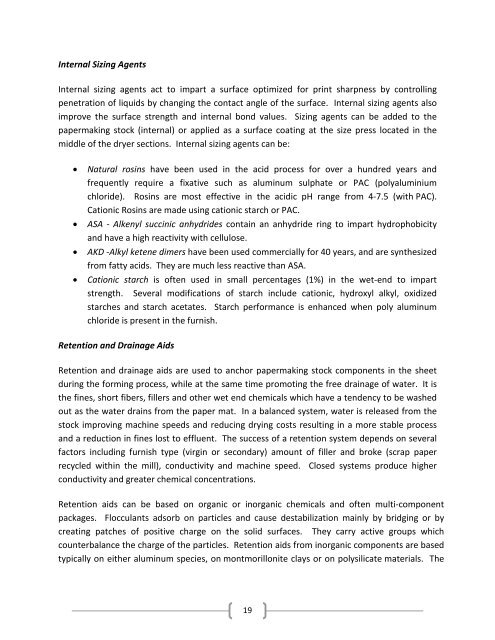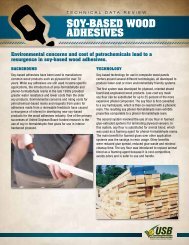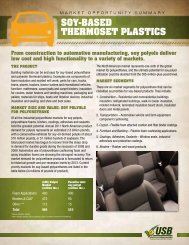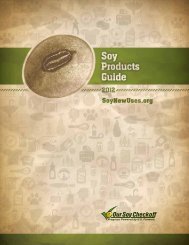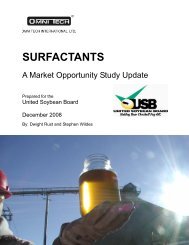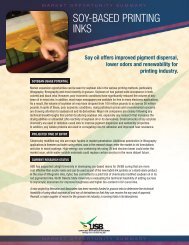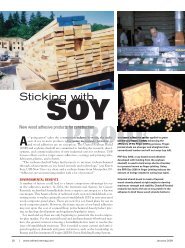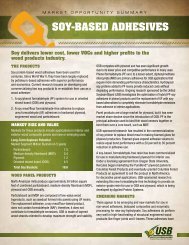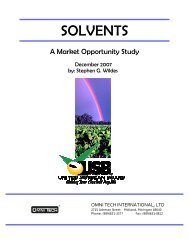SOY CHEMICALS FOR PAPER PROCESSING - Soy New Uses
SOY CHEMICALS FOR PAPER PROCESSING - Soy New Uses
SOY CHEMICALS FOR PAPER PROCESSING - Soy New Uses
Create successful ePaper yourself
Turn your PDF publications into a flip-book with our unique Google optimized e-Paper software.
Internal Sizing AgentsInternal sizing agents act to impart a surface optimized for print sharpness by controllingpenetration of liquids by changing the contact angle of the surface. Internal sizing agents alsoimprove the surface strength and internal bond values. Sizing agents can be added to thepapermaking stock (internal) or applied as a surface coating at the size press located in themiddle of the dryer sections. Internal sizing agents can be:• Natural rosins have been used in the acid process for over a hundred years andfrequently require a fixative such as aluminum sulphate or PAC (polyaluminiumchloride). Rosins are most effective in the acidic pH range from 4-7.5 (with PAC).Cationic Rosins are made using cationic starch or PAC.• ASA - Alkenyl succinic anhydrides contain an anhydride ring to impart hydrophobicityand have a high reactivity with cellulose.• AKD -Alkyl ketene dimers have been used commercially for 40 years, and are synthesizedfrom fatty acids. They are much less reactive than ASA.• Cationic starch is often used in small percentages (1%) in the wet-end to impartstrength. Several modifications of starch include cationic, hydroxyl alkyl, oxidizedstarches and starch acetates. Starch performance is enhanced when poly aluminumchloride is present in the furnish.Retention and Drainage AidsRetention and drainage aids are used to anchor papermaking stock components in the sheetduring the forming process, while at the same time promoting the free drainage of water. It isthe fines, short fibers, fillers and other wet end chemicals which have a tendency to be washedout as the water drains from the paper mat. In a balanced system, water is released from thestock improving machine speeds and reducing drying costs resulting in a more stable processand a reduction in fines lost to effluent. The success of a retention system depends on severalfactors including furnish type (virgin or secondary) amount of filler and broke (scrap paperrecycled within the mill), conductivity and machine speed. Closed systems produce higherconductivity and greater chemical concentrations.Retention aids can be based on organic or inorganic chemicals and often multi-componentpackages. Flocculants adsorb on particles and cause destabilization mainly by bridging or bycreating patches of positive charge on the solid surfaces. They carry active groups whichcounterbalance the charge of the particles. Retention aids from inorganic components are basedtypically on either aluminum species, on montmorillonite clays or on polysilicate materials. The19


